Although Tour de France is not the only road cycling event with rich history, it is undeniably the most famous one with the biggest impact on the entire history of bicycle races. Furthermore, Tour de France has its own important place in the 20th-centurian cultural history of Europe. No wonder that the biggest chunk of the content on PelotonTales blog is about the French grand tour. This summary below is about what kind of posts you can find about the history of Tour de France on this blog.
Table of Contents
ToggleTHE FIRST TOUR DE FRANCE
The first Tour de France started on the afternoon of 1 July 1903. At the beginning of the 20th century, organizing a multiple-stage race was a revolutionary idea. But "foundig father" Henri Desgrange and his team succeded.
The first Tour de France included six stages. Maurice Garin led the gemeral classification since the first stage. And at the end of the month he became also the first Tour de Framce winner.
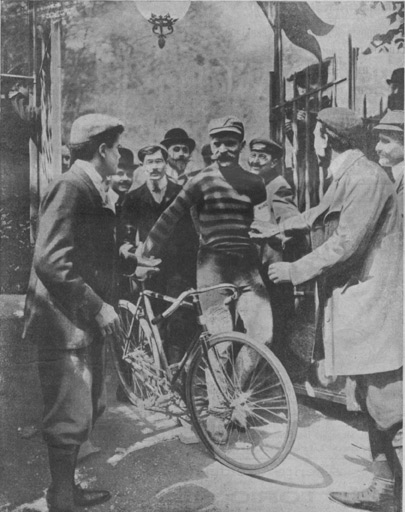
More about the first Tour de France
(the article contiunes below the post reccommendation)
OTHER RACES BEFORE WORLD WAR 1
As I mentioned before, Tour de France (and road cycling racing in general) has a strong connection to cultural history. And because the First World War is cosidered an important watershed in modern European history, therefore
it seems to be a relevant approach also in road cycling history to see this historical event as divider between the early period of bicycle history and the rest of it.
(I covered this topic in several posts on my Patreon - please, subscribe!)
But also from a more practical point of view, after 12 editions in a row between 1903 and 1914, the war brought a four-year-long hiatus in racing. There were no Tour de France between 1915 and 1918 and it had to be re-started in 1919. Good news (sort of):the financial struggles of the professional cycling teams during the post-war period led indirectly to create one of the most iconic elements of Tour de France: the yellow jersey.
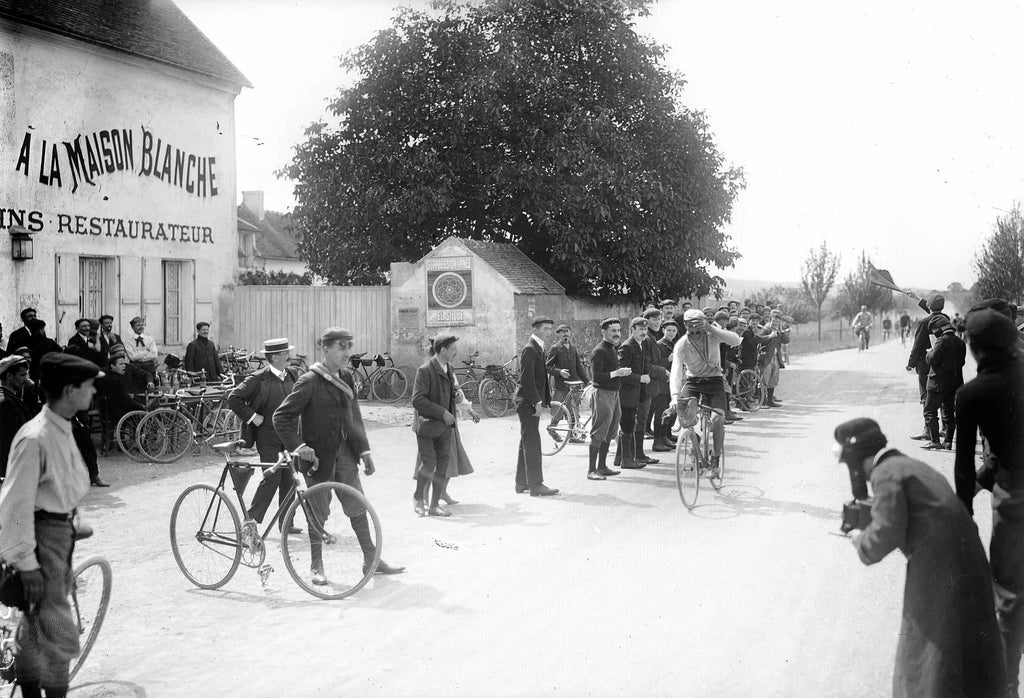
Anyway, because road cycling before World War 1 is one of the most beloved topics here on PelotonTales, you can find many post related to the topic.
The most important achievement during this time period was the introduction of the hight mountains to Tour de France. You can read about the story how the organizers decided to include Tourmalet into the program (1910), also about the introduction of the mighty Alpine ascentes, like Galibier, for example. As always, you can read the stories of interesting members of the peloton,like Hippolyte Aucouturier.
Nevertheless, the first long decade in the history of Tour de France were also the forming years how to organize such a big road cycling event. Therefore there are posts about such important milestones like the temporary introduction of the point system (1905-1919), also the first abroad stages of Tour de France.
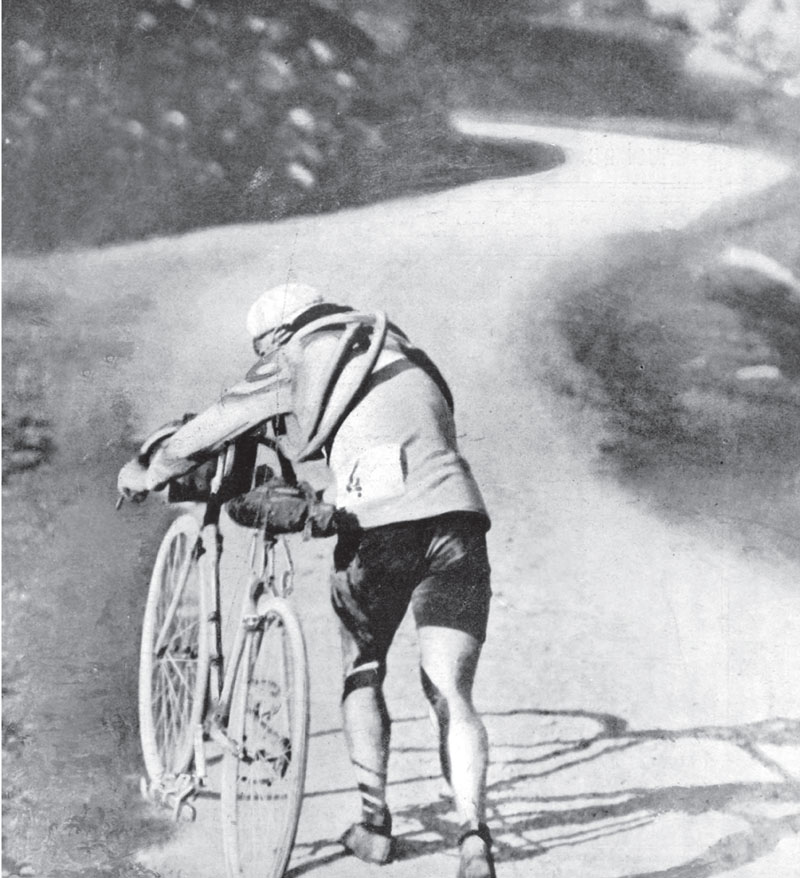
The pre-war editions of Tour de France also provided such stories like "Drunk from a poisoned bottle, lost the Tour de France", or "He won the Tour de France, but lost his money to gambling". Please, check out these stories too.
THE 1920S AND THE 1930S AND THE ERA OF THE NATIONAL TEAMS (1930-1961)
I usually put these two decades together in the same box, because basically the are the "between the two world wars" era. But if we take a closer look the differences of the two decades are more visible.
The big turning point seems to be the introduction of the national teams in 1930. During the last few years in the 1920s Alcyon team gained such dominance at Tour de France, that they could afford to make a relatively unknown (and sick during almost the entire competiton) cyclist to Tour de France champion with little effort.
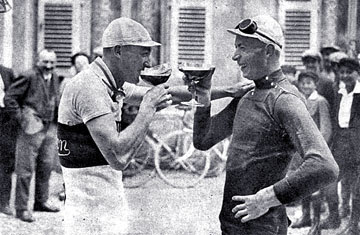
And Henri Desgrange did not like it.
His idea was to invite national teams instead of professional ones (named usually after the sponsoring bicycle manufactures), which would change the dinamics within the teams and a victory will be more the results of the individual efforts than of teamwork.
Paradoxically, forming temporary allies based on the nationalities of the cyclists helped to create much more formalized race dinamics, something what we considered "more professional" nowadays.
The more spontaneous era with more individaul-centered stories were gone forever.
Because it was never about the dichotomy of amateurism vs. professionalism in the modern 21st-centurian sense. The enviroment of road cycling races was always professional. Basically, the competitive cycling were born for marketing reasons (as the origin of Tour de France proves too), cyclists avertised by taking part in cycling races not only the bicycle itself, but the kits, also, in a way, the entire new lifestyle built around this new vechicle called bicycle. (And even women track cyclists could earn a fortune during the first big bicycle craze in the 1890s in America)
It' s much more about spontaneity vs formality. If we take a glimpse on the typical stories from the 1920s, there are still elements in them reminding us of the early days of road cycling races. Of those stories what makes us love the early days of road cycling races.
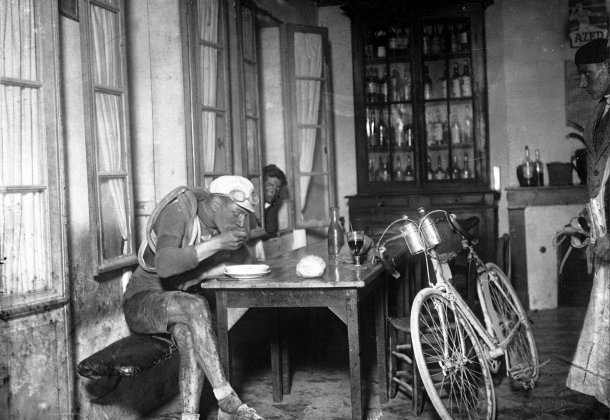
Extreme characters, like Jules Deloffre, the "acrobat cyclist", who after riding 250-300 km still had energy and willingness to entertain the audience with acrobatic performances, seem much more men of the 1920s, than the 1930s.
The first decade of this era seems much colourful, flamboyant and whimsical. The stories worth re-telling include much more elements individualism. Meanwhile the 1930s are more about gorups of people. "The French", "the Italians", "the Belgians", etc. Unfortunately, approching the competition from a nationalist point of view (note, Henri Desgrange was a right-wing person, like many other founding fathers of the modern sport) led some of the bigger scandals in the history of Tour de France too.
Also, it somehow seems obvious that the stage esrned its place in the mythology as "the hardest Tour de France stage ever"comes from this era.
Besides the introduction of the national teams, this time period witnessed only a few innovations. Like the first start outside Paris (1926). Or the introduction of the individual time trial (1934)
Most notable cyclists from this era were among others:Henri Pelissier, Ottavio Bottecchia, Nicolas Frantz, Antonin Magne or André Leducq. The latter two created some iconic moments together like this one or this.
TOUR DE FRANCE IN THE 1920S
TOUR DE FRANCE IN THE 1930S
THE GREAT RIVALRIES. COPPI VS BARTALI, ANQUETIL VS POULIDOR, MERCKX VS EVERYBODY
Have you ever thought about it, that Fausto Coppi, one of the greatest legends of road cycling attended only three editions of Tour the France? This article might help you to see his impact on this sport from this point of view. Although the rivalry between Coppi and Gino Bartali divided Italy, due to the system of competition between narional teams they were in the same team at Tour de France. It does not mean, of course, that there were no tensions between them. As the story of Tour de France 1949 (by the way, the year when Coppi, the first cyclist ever managed the Giro-Tour double) shows, sport director Alfredo Binda (a cycling legend himself) had to use all his diplomatic skills to handle some delicate situations.
The 1950s witnessed also some iconic performances by the most excellent climbers (and Tour de France winners) like Federico Bahamontes, Louison Bobet, or Charly Gaul.
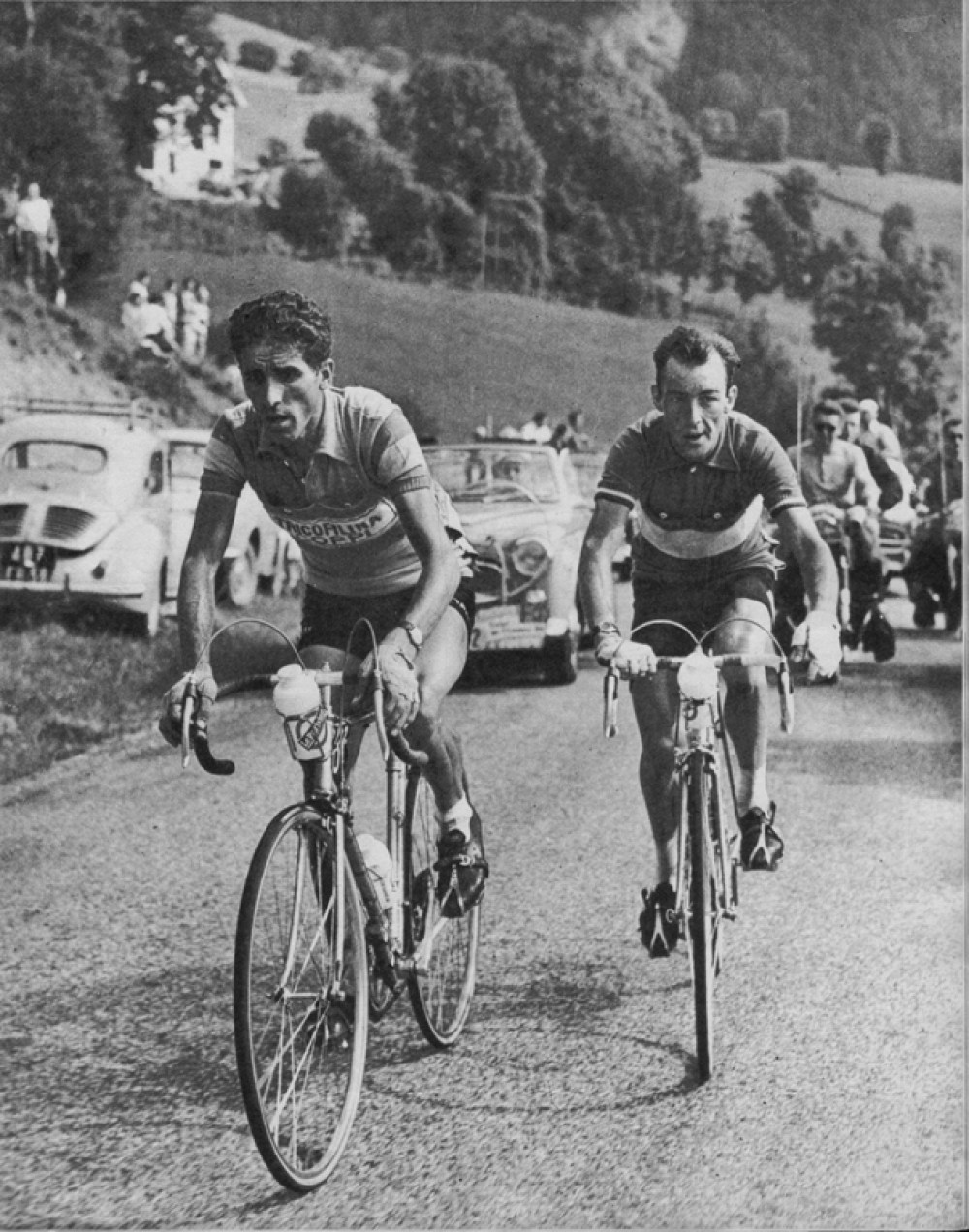
Speaking of climbers, some of the most iconic ascents were introduced to the race during these years, for example Mont Ventoux (1951) Alpe d'Huez, Puy de Dôme (both in 1952)
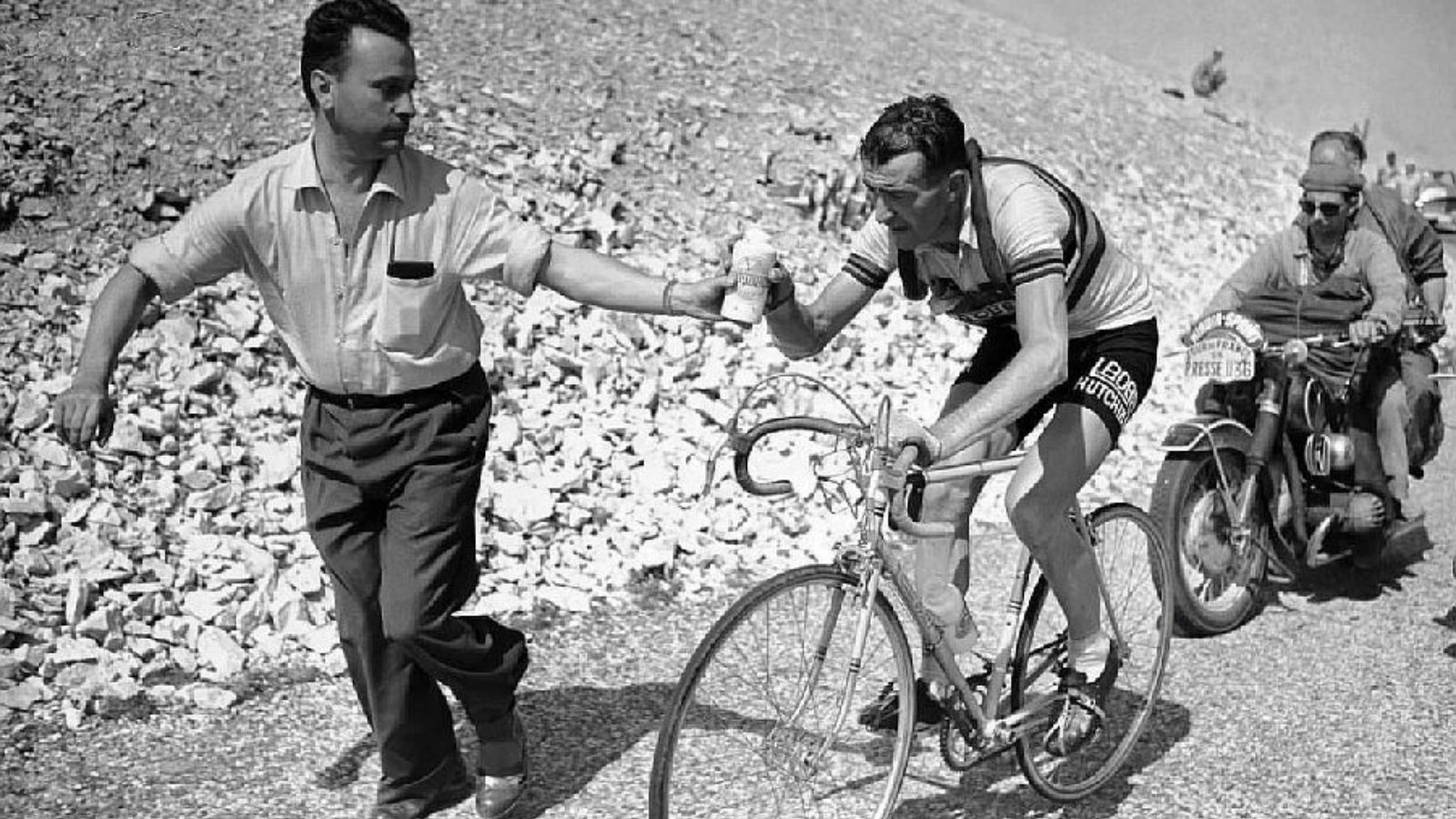
The 1960s, after the return of the commercial teams, another rivalry captured the imagination of the fans. Jacques Anquetil vs. Raymond Poulidor. As it used to happen so often with road cycling stories, the impact of their duels reached beyond the world of road cycling races.
And then came Eddy Merckx.
Arguably the greates star of road cycling. Holder of plenty of records, protagonist of myriad of Tour de France fun facts. It might sound a bit exaggerated (for rethorical purposes only, of course) but during his reign (first half of the 1970s) everybody was competing for the second position. Merckx duelled with Felice Gimondi (not only at the Tour de France, of course), Luis Ocaña (who managed to win Tour de France in 1973 when Merckx was focusing on the Vuelta-Giro double), or Bernard Thévenet, whose Tour de France victory in 1975 marked the beginning of the post-Merckx era.
Other notable names of this era were (among many many others) Lucien Van Impe , Freddy Maertens ,Joop Zoetemelk
COPPI AND BARTALI
ANQUETIL AND POULIDOR
EDDY MERCkx
TOUR DE FRANCE HISTORY IN A MORE MODERN ERA
As you can see, the more we are closer to our times, the less content there are on PelotonTales. This blog (founded by me, Anita Pethő, literary critic and cultural historian) is more about those time we (most of us) don't have direct connection. No wonder that there is a big watershed around the year 1980 how this blog presents history of Tour de France, because that the year I was born. Although we can argue about that even the minute just passed is already part of history, there is a general sense, that history is something happened before we were born.1
Anyway, let's see what the blog offers about the last four decades of Tour de France history.
The 1980s, for example, witnessed the peak of Bernard Hinault's career and the last French Tour de France victory.
Also, this was the decade of Laurent Fignon, Greg LeMond, Pedro Delgado
And actually, that's it. Anita Pethő's Tour de France history ends somewhere in the Alps in the middle of the 1980s.
Someone who is more interested summarising the history of the most famous cycling race from a technological point of view, might find also the subsequent decades exciting. But
PelotonTales is about stories,
more precisely about stories from the past, that time period of European history, which carries more differences than similarities to our time. Writing about the past, or turning to the past to dig out fascinating stories is always about the dynamics differences and the similarities.
Also, it's quite deliberate for me creating almost no content about the 1990s and the 2000s, especially the Armstrong-years, which in my opinion were the lowest point of the many-scandal-marred more than a century long history of Tour de France.
And what's with the New Golden Era Of Cycling?
Although we like to refer some results as historical, it's still something happening in our days. That above mentioned dynamycs just doesn't work. In that sense, there are no differences just similaririties. And therefore not the central topic if this blog.
- Btw, this is what led to the ultimate failure of the epic tv series The Crown. As the story came closer and closer to our life it sounded more and more false regarding it as a historical drama. [↩]